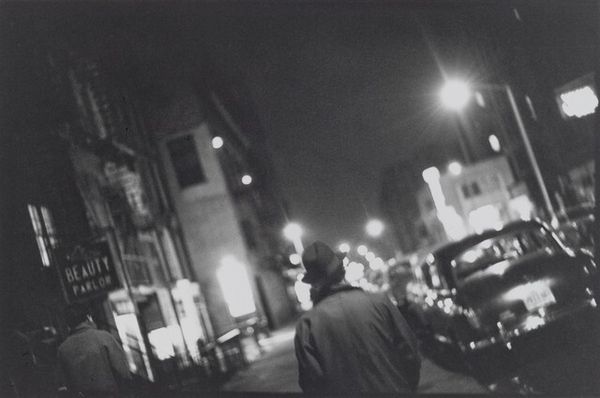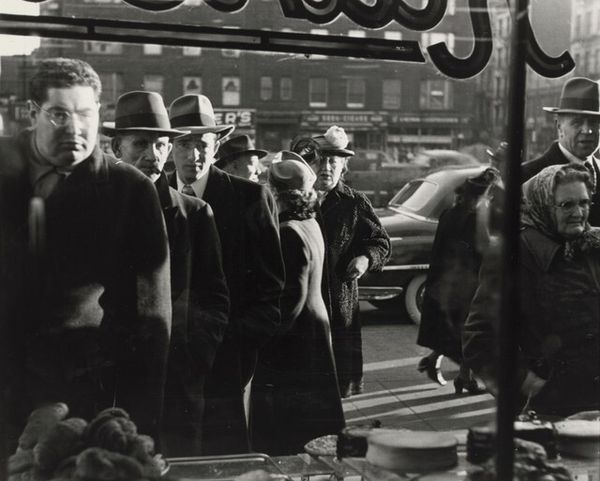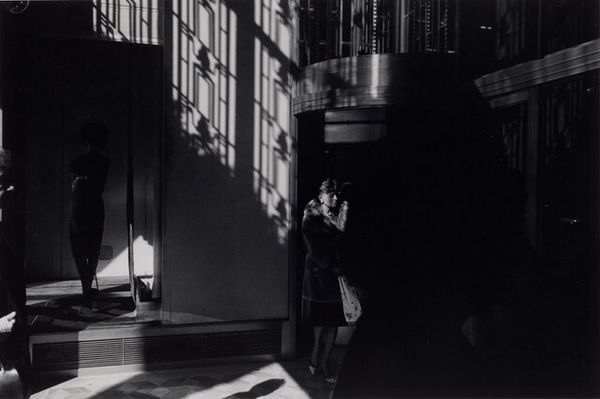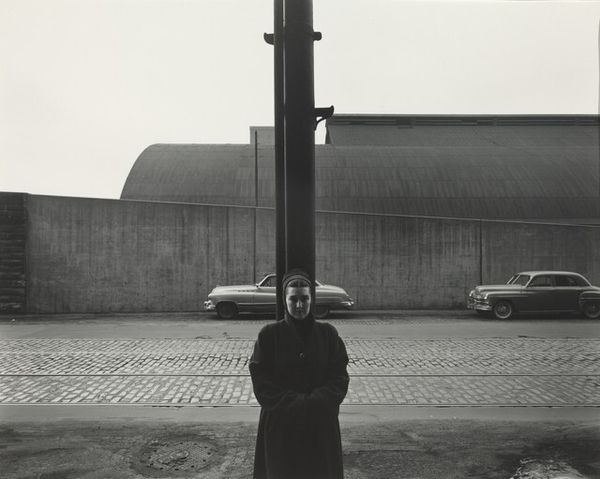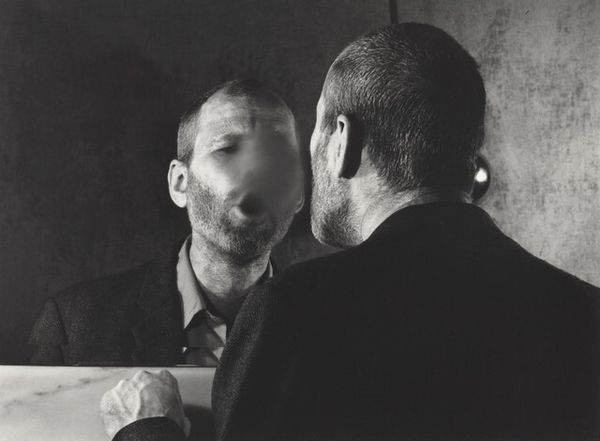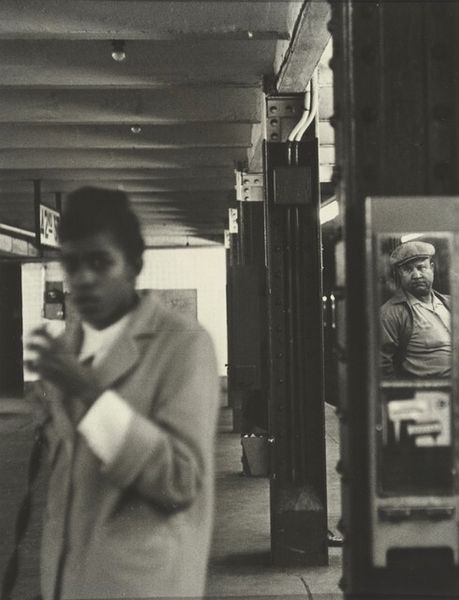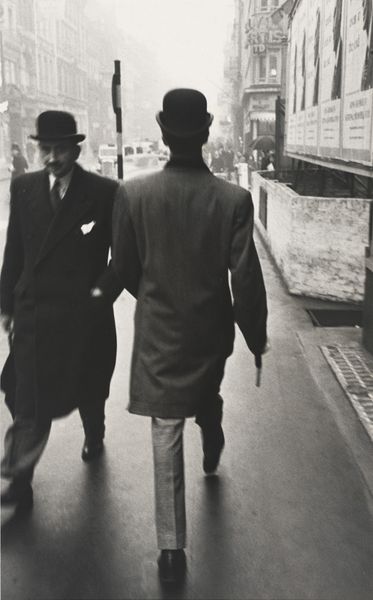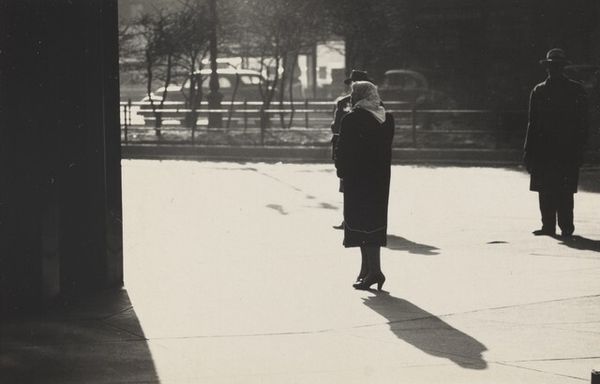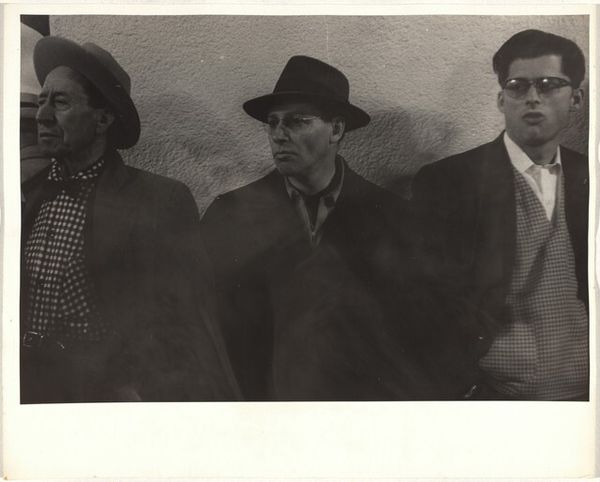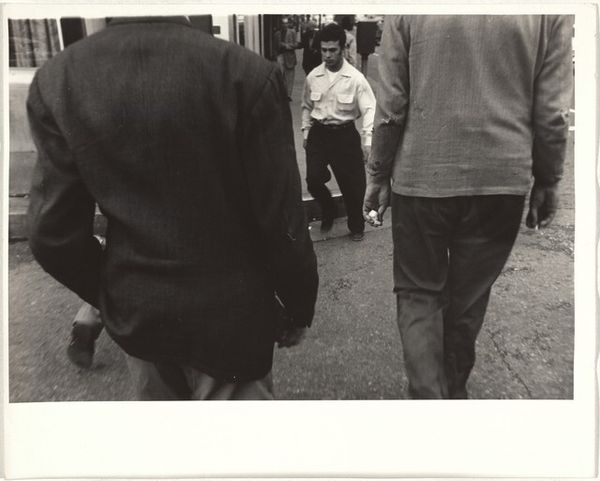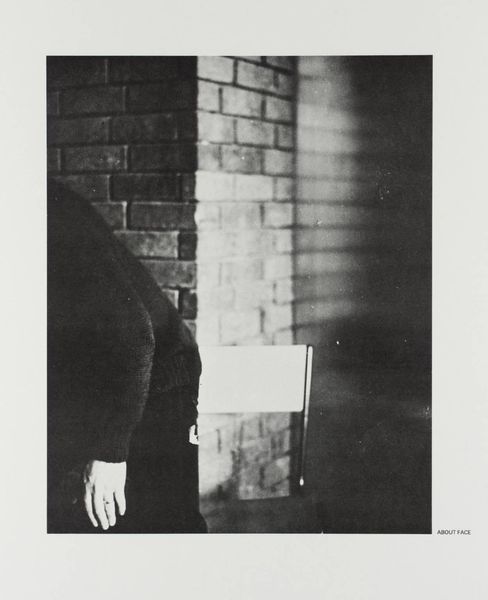
photography, gelatin-silver-print
#
portrait
#
black and white photography
#
street-photography
#
photography
#
black and white
#
gelatin-silver-print
#
monochrome photography
#
cityscape
#
monochrome
#
modernism
#
monochrome
Dimensions: image: 32.9 × 49.5 cm (12 15/16 × 19 1/2 in.) sheet: 40.32 × 50.48 cm (15 7/8 × 19 7/8 in.)
Copyright: National Gallery of Art: CC0 1.0
Editor: We’re looking at Frank Paulin's "Black Man, White Man, Times Square," taken after 1956; it's a gelatin silver print. It has a strong contrast with really distinct subjects. What compositional choices strike you? Curator: Notice the strong vertical division. The frame bisects the subjects, setting up a dynamic tension. One figure occupies a darkened, enclosed space, the other moves freely in the light of Times Square. The photographer uses light and shadow to define distinct zones, and each man is sharply focused, which draws the eye. What do you make of that contrast? Editor: It definitely emphasizes their separation. Do you think it could speak to how their experiences differ? Curator: While sociological readings are possible, I would emphasize that the image invites multiple readings, given its structural arrangement. Consider the geometry – the framing within a framing – that draws our gaze. Does this structured approach suggest a universal order or perhaps an imposition upon reality? Note that while one side is angular, dark, and shadowed, the other seems smooth and almost blurred. What visual strategy might the artist be using? Editor: Possibly to heighten the starkness of the city… almost like anxiety or…discomfort in it? Curator: Precisely! Now, see how the composition, tonality, and framing together establish not just a setting, but also evoke emotions? Editor: I see it now. The structured approach is a strategy that highlights contrast to deliver emotion! Curator: Indeed. This work is a strong lesson in what can be achieved through understanding form.
Comments
No comments
Be the first to comment and join the conversation on the ultimate creative platform.
